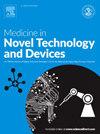Near-infrared light-responsive photothermal-chemical synergistic antimicrobial GO-BPEI/La nanofiber membrane in the repair of skin wound inflammation
Q3 Medicine
引用次数: 0
Abstract
Electrospun fibers are widely used in biomedical applications for tissue and organ repair due to their unique structure, which resembles the extracellular matrix (ECM). A key challenge in designing ideal wound dressings lies in simultaneously enhancing antibacterial efficacy and biocompatibility. In this study, to address chronic inflammation associated with microbial resistance, branched polyethyleneimine (BPEI)-modified graphene oxide (GO) (GO-BPEI) and LaCl3 were incorporated into a solution composed of polyvinyl alcohol (PVA) and chitosan (CS). Through electrospinning, a PVA/CS/GO-BPEI/La nanofibrous membrane with photothermal/chemical synergistic antibacterial properties was fabricated. The resulting membranes exhibited favorable mechanical properties, breathability, and moisture absorption. The photothermal antibacterial effect of GO-BPEI, combined with the chemical antibacterial activity of LaCl3, endowed the electrospun membranes with remarkable inhibition rates against Staphylococcus aureus (97 %) and Escherichia coli (99 %). Moreover, the membranes showed negligible cytotoxicity toward human skin fibroblasts (HSFs) and only a minor impact on cell migration. Therefore, this electrospun membrane demonstrates great potential as a skin wound dressing for infection suppression and tissue regeneration.
近红外光响应光热化学协同抗菌GO-BPEI/La纳米纤维膜在皮肤创面炎症修复中的作用
电纺丝纤维因其独特的细胞外基质结构而广泛应用于生物医学领域的组织和器官修复。设计理想伤口敷料的关键挑战在于同时提高抗菌效果和生物相容性。在本研究中,为了解决与微生物耐药性相关的慢性炎症,将支链聚乙烯亚胺(BPEI)修饰氧化石墨烯(GO-BPEI)和LaCl3加入到聚乙烯醇(PVA)和壳聚糖(CS)组成的溶液中。通过静电纺丝法制备了具有光热/化学协同抗菌性能的PVA/CS/GO-BPEI/La纳米纤维膜。所得膜具有良好的机械性能、透气性和吸湿性。GO-BPEI的光热抑菌作用,结合LaCl3的化学抑菌活性,使电纺丝膜对金黄色葡萄球菌(97%)和大肠杆菌(99%)具有显著的抑制率。此外,这些膜对人皮肤成纤维细胞(hsf)的细胞毒性可以忽略不计,对细胞迁移的影响也很小。因此,这种电纺丝膜作为皮肤伤口敷料具有抑制感染和组织再生的巨大潜力。
本文章由计算机程序翻译,如有差异,请以英文原文为准。
求助全文
约1分钟内获得全文
求助全文
来源期刊

Medicine in Novel Technology and Devices
Medicine-Medicine (miscellaneous)
CiteScore
3.00
自引率
0.00%
发文量
74
审稿时长
64 days
 求助内容:
求助内容: 应助结果提醒方式:
应助结果提醒方式:


